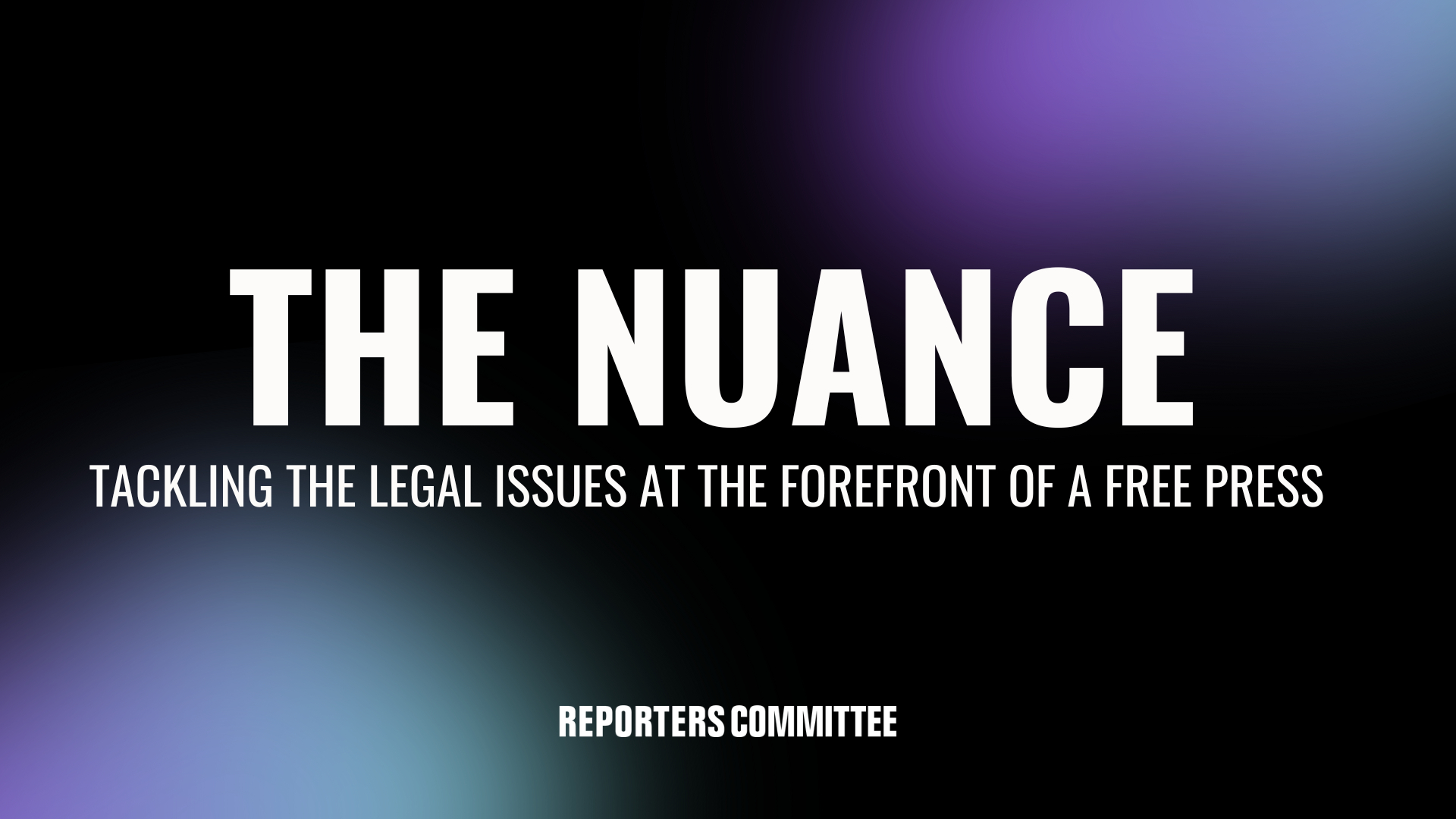So you want to unseal a warrant

At the Reporters Committee, we spend a fair share of our time arguing that the public is entitled to transparency when the government seeks warrants, surveillance orders and other criminal-investigative authorities from the federal courts — but it isn’t a topic that usually makes for A1 news. That changed this month, as readers likely know, when the U.S. Justice Department obtained a warrant to search Mar-a-Lago for sensitive documents that may have been retained by former President Donald Trump. The Reporters Committee hasn’t filed in that matter, but we thought it might be worth providing some broader context on the way that federal courts (and, for that matter, the Justice Department) usually approach public access to warrant materials.
Your right to review federal court filings for yourself has two sources: the First Amendment and the common law. (To a rough cut, the difference between the two is that the common law right applies to a broader range of documents but is easier for a party who wants secrecy to overcome; the First Amendment right is narrower but stronger.) On either footing, the basic logic — as the U.S. Court of Appeals for Fifth Circuit put it in a case on access to warrant materials — is the same: The public won’t have much confidence in the court system “where important judicial decisions are made behind closed doors and then announced in conclusive terms to the public, with the record supporting the court’s decision sealed from public view.”
In the warrant context, though, investigators typically claim that a host of interests justify departing from the usual presumption of transparency. The Justice Department’s bid to keep under wraps the affidavit for the Mar-a-Lago warrant — the document that would explain why the government believed it had probable cause to think it would find evidence of a crime — walks through the characteristic objections: Public access could “reveal ongoing and future investigative efforts,” could “undermine agents’ ability to collect evidence or obtain truthful testimony,” could out witnesses, and could tar the reputation of uncharged targets.
How that balance of interests nets out in any particular jurisdiction — to say nothing of any particular case — makes for something of a legal crazy quilt. The U.S. Court of Appeals for the Ninth Circuit, for instance, makes a bright-line distinction between closed investigations and those that haven’t produced an indictment, an approach the Justice Department often urges. We (and several other circuit courts) think it makes more sense to treat the status of an investigation as just one of the facts to be weighed in the case-by-case effort to balance transparency with any other interests in play, a balance that can be struck by redacting sensitive details rather than by hiding whole records. The U.S. Court of Appeals for the Eleventh Circuit, which will likely eventually be asked to resolve the question of access to the Mar-a-Lago affidavit, hasn’t picked an approach.
It was somewhat surprising in that light, though not unprecedented, to see the government agree to unseal anything at all in the ongoing investigation of former President Trump. Even in closed cases, the Justice Department often opposes disclosure of information it would prefer not to acknowledge; for more than a year now, we’ve been fighting on behalf of the Los Angeles Times for public access to the warrant materials from the government’s closed insider-trading investigation of U.S. Sen. Richard Burr (R-N.C.). It took a trip to the U.S. Court of Appeals for the D.C. Circuit to get the government to acknowledge the investigation’s existence — even though Burr himself had openly discussed it — and only this past week did the Justice Department wave the white flag on many of the redactions it initially requested to those search warrant materials.
So the difficult work of upholding transparency grinds on, and will keep grinding on after the spotlight on the Mar-a-Lago search fades. We’ve just filed another new matter on behalf of a media coalition seeking to unseal judicial records related to the warrants the FBI executed at the Laredo home and campaign office of U.S. Rep. Henry Cuellar (D-Texas) earlier this year. As these cases continue to arise, we hope the Justice Department will more fully internalize the view the current attorney general articulated during his tenure on the D.C. Circuit: “The public’s right of access to judicial records is a fundamental element of the rule of law,” and providing as much transparency as is workable should be the norm, not the exception.
Like what you’ve read? Sign up to get The Nuance newsletter delivered straight to your inbox!
The Technology and Press Freedom Project at the Reporters Committee for Freedom of the Press uses integrated advocacy — combining the law, policy analysis, and public education — to defend and promote press rights on issues at the intersection of technology and press freedom, such as reporter-source confidentiality protections, electronic surveillance law and policy, and content regulation online and in other media. TPFP is directed by Reporters Committee attorney Gabe Rottman. He works with Stanton Foundation National Security/Free Press Legal Fellow Grayson Clary.